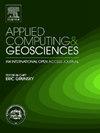使用异常检测和机器学习技术预测稀有和异常矿物
IF 3.2
Q2 COMPUTER SCIENCE, INTERDISCIPLINARY APPLICATIONS
引用次数: 0
摘要
本研究将机器学习应用于大型矿物学数据集中的异常矿物检测和分类,加强地质勘探和资源识别。利用隔离森林和一类支持向量机,我们识别出与普通矿物成分不同的具有独特物理和化学性质的稀有矿物。利用KMeans聚类将这些异常进一步分为三类,每一类都与不同的地质形成环境有关:蒸发作用、变质作用和岩浆作用。该研究还使用统计基准评估了这些机器学习模型的可靠性,并探讨了深度学习在改进异常检测方面的作用。这些发现证明了无监督学习在增强矿物分类、降低勘探成本和改进稀有矿床预测建模方面的潜力。未来的研究将通过整合深度隔离森林、自动编码器和图神经网络来完善这些方法,进一步加强机器学习在地球科学中的应用。本文章由计算机程序翻译,如有差异,请以英文原文为准。
Prediction of rare and anomalous minerals using anomaly detection and machine learning techniques
This study applies machine learning to detect and classify anomalous minerals within a large mineralogical dataset, enhancing geological exploration and resource identification. Using Isolation Forest and One-Class SVM, we identified rare minerals with distinct physical and chemical properties that deviate from common mineral compositions. These anomalies were further grouped using KMeans clustering into three categories, each linked to different geological formation environments: evaporitic, metamorphic, and magmatic processes. The study also evaluates the reliability of these machine learning models using a statistical benchmark and explores the role of deep learning in improving anomaly detection. The findings demonstrate the potential of unsupervised learning to enhance mineral classification, reduce exploration costs, and improve predictive modeling for rare mineral deposits. Future research will refine these methods by integrating Deep Isolation Forest, Autoencoders, and Graph Neural Networks, further strengthening machine learning applications in geosciences.
求助全文
通过发布文献求助,成功后即可免费获取论文全文。
去求助
来源期刊

Applied Computing and Geosciences
Computer Science-General Computer Science
CiteScore
5.50
自引率
0.00%
发文量
23
审稿时长
5 weeks
 求助内容:
求助内容: 应助结果提醒方式:
应助结果提醒方式:


